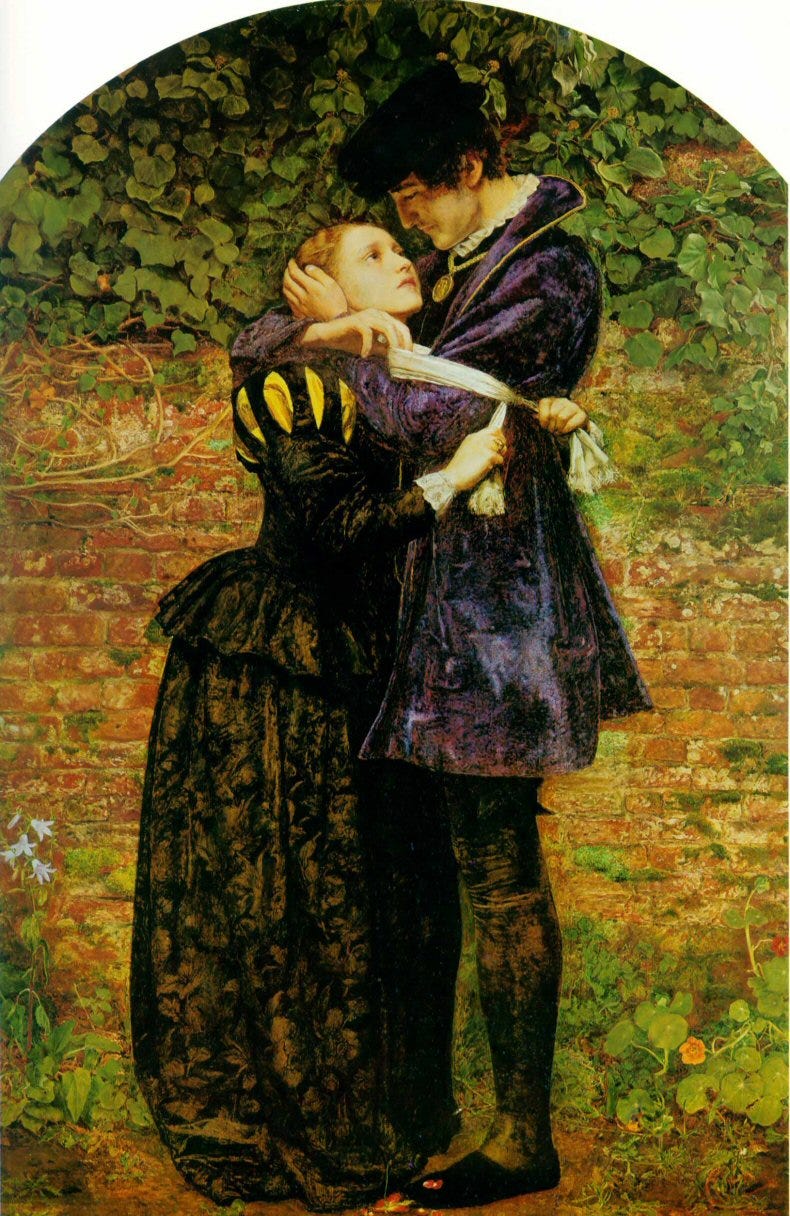VOC (Dutch East India company) ships bound for Asia brought almost a million persons between the early 1600s and late 1700's averaging 5,000 a year over a span of 2 centuries. Whilst many of these were young Dutch men, this labour market had begun to exhaust around 1640 and recrutiment extended into Germany and Denmark. One of those German recruits was my 5th great grandfather Johan Anton Neubronner
Another, non Dutch recruit was Christoffel Barbier my Great x 9 grandfather. Although born in Leiden (Holland) he was French. His grandfather Etienne Barbier was born in the Arras region of France and a Huguenot escaping religious persecution by French Catholics that culminated in the brutal St Bartholomews massacre of 1572.
By 1600 Etienne had settled in Leiden where there was a large refugee community of Huguenots and had begun a family of which Christoffel's father Michiel would be born in 1608.
The painting below by John Millias titled "A Huguenot, on St. Bartholomew's Day" is a popular example of pre Raphaelite art but not until now had I realised its embedded symbolism. It depicts a pair of young lovers: the woman, who is Catholic, is attempting to get her beloved, who is Protestant, to wear the white armband declaring allegiance to Catholicism. The young man firmly pulls off the armband at the same time that he gently embraces her. At the St. Bartholomew's Day massacre around 3,000 French Protestants (Huguenots) were murdered in Paris, with around 20,000 massacred across the rest of France. A small number of Protestants escaped from the city through subterfuge by wearing white armbands.
The painting done in 1851 may also be using popular Victorian symbolism of the language of flowers: Canturbury bells on the left to depict faith and constancy and Nasturtiums on the right to depict patriotism, conquest and heroism.
Christoffel was born in 1652. I can't trace, unlike other ancestors, his employment and travel dates for his voyage to Batavia which are usually quite well documented. But he is noted in a list dated 1678 as owning a propery in Belimbing near Malacca. He is also mentioned in Dennis de Witt's article about Adriaan Koek as being the father of Joanna Barbier (Adriaan Koek's mother) who married my Great x 8 grandfather Joost Danielsz Koek.
Christoffels wife, and mother of Joanna, is Maria Van Macau a freed slave from Macau. Who knows where she might have originated from, the Portuguese brought African, Indian, Indonesian and even Japanese slaves to Macau but she was most likely a Catholic through forced conversion. Did she become Protestant on marrying her husband? I don't know but I do know that my grandmother who is descended from the Koeks was a devout Catholic and married a Catholic Portuguese Eurasian. Their daughter, my mother, required my Protestant father to convert to Catholicism to marry her.
Whilst the narratives of religion are often of peace and love, the realities of massacres, oppression, persecution, coercion and forced conversions, also echo in equal measure through four centuries of my family history.





